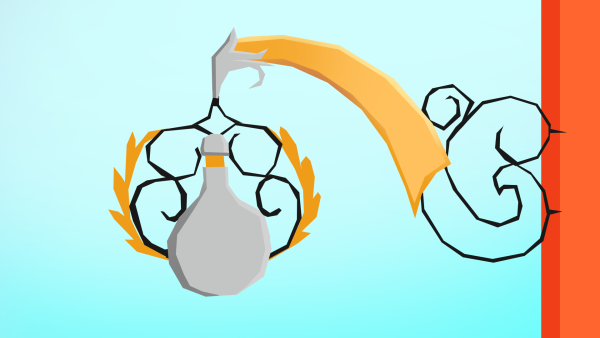Disclosure: This post may contain affiliate links, which means I may receive a small commission, at no cost to you, if you make a purchase through a link.
Genres are a useful way to compartmentalize your writing – are you writing fantasy, romance, or a thriller? In this list, I’d like to talk about some of the writing genres you’re going to need to know!
Genres are a sort of “guidelines” to help us distinguish writing more easily. You probably heard about most of these genres. Of course, not all fiction pieces adhere strictly to its genre; you could argue most of them don’t. Writing can reach out into different genres, they can be part one genre, part another one. For example, the Harry Potter series can be classified as fantasy, but it has some serious mystery features. Use these genres to help you quickly “know” a book, but don’t judge one because of a certain genre.
With that said, let’s look at some of the genres of writing!
Fantasy
Fantasy is the genre you, the readers of my blog, are probably most familiarized with. This genre of writing includes scenarios, characters, or locations that couldn’t happen in real life, which may include magic, and magical creatures. The inspiration of fantasy stories is often folklore stories, fairy tales, myths, or other fantasy works. Fantasy works are more often than not set in medieval-like worlds, such as Middle-Earth and Lord of the Rings. Perhaps the most known exception to this is the aforementioned Harry Potter series, which takes place in modern times.
Here are some examples of fantasy works:
- Game of Thrones by George R. R. Martin
- Chronicles of Narnia by C. S. Lewis
- Warcraft: Lord of the Clans by Christie Golden
SF
SF, sci-fi, or science fiction, is a sister genre to fantasy. It is often defined as a work containing “novum”, which is a thing that is currently not true (at the moment), but it’s not outright impossible. Such things include advanced technology, such as artificial intelligence indistinguishable from humans, robotics, or space travel. Science fiction can be used as a political commentary, such as James Cameron’s Avatar was meant to be a protest against imperialism.
- Dune by Frank Herbert
- 1984 by George Orwell
- The Martian by Andy Weir
Horror
Horror aims to scare or disgust the reader. It usually relies on setting an eerie atmosphere, often by including super-natural elements. Readers seek the excitement of being scared, as is theorized, because we’re missing the edge our ancestors had, when they didn’t have civilization to keep them safe.
- Dracula by Bram Stoker
- The Silence of the Lambs by Thomas Harris
- The Shining by Stephen King
Romance
Romance stories explore the romantic relationship between two people, usually a heroine and a hero. Often, these two meet early in the story, building their relationship throughout the plot, which ends in the two getting married and living happily ever after. Romantic novels do not have to include erotic elements.
- Pride and Prejudice by Jane Austen
- Gone With the Wind by Margaret Mitchell
- It Ends with Us by Colleen Hoover
Thriller
Thrillers are sometimes said to be the sister genre of Horror. They feature a suspenseful story and try to evoke anticipation and anxiety. Generally, thrillers keep the readers on the edge of their seats, building up from the beginning, all the way to the climax. Usually, they have a villain-driven plot and use cliffhangers, red herrings, and plot twists extensively.
- The Bourne Identity by Robert Ludlum
- The Girl on the Train by Paula Hawkins
- Sharp Objects by Gillian Flinn
YA
YA, or young adult, is a genre targeted at people of the age from 12 to 18. These stories usually include protagonists of a similar age, who is going through problems relatable by the target demographic. Often, they’re stories about coming-of-age, where the main character is trying to learn to take responsibility for his or her actions and becoming adults.
- Hunger Games by Suzanne Collins
- Divergent by Veronica Roth
- Lord of the Flies by William Golding
Mystery
Mysteries usually include a crime that the main character is trying to solve. Whether it be a “locked room” scenario, where the crime is committed in seemingly impossible conditions, a “whodunit”, where there’s a group of characters, and the goal is to find which of them committed the crime, or any other subgenre, mysteries are pretty popular since the 1890s, with the introduction of Sherlock Holmes.
- And Then There Were None by Agatha Christie
- Gone Girl by Gillian Flynn
- The Hound of the Baskervilles by Sir Arthur C. Doyle
Children’s
Books and stories intended for children, including, but not limited to fairy tales, often include a moral or are trying to teach the child something essential, like reading, or counting. If the story is targeted at pre-literate children, it relies on images to convey the story. Other works use big letters, and simple text, to help children who are novices at reading comprehend the story easily. More advanced children’s books, for children already proficient in reading work only with simpler text than other books, avoid controversial topics, and often feature a child in the role of the main character.
- Owl Moon by Jane Yolen
- Frog and Toad by Arnold Lobel
- The Little Prince by Antoine de Saint-Exupéry
Historical
Historical fiction is a genre taking place during a historical period. The events of the story are fictional, but the setting should be as closely accurate to the historical period. This may be one of the hardest genres to write, in terms of research. To write an accurate historical novel, you really have to understand the time in and out.
- The Book Thief by Markus Zusak
- The Fair Fight by Anna Freeman
- The Game of Kings by Dorothy Dunnett
These are the main genres of fiction writing, in my opinion. Is there any genre I missed or misrepresented? Let me know in the comment section below this article!
For more writing articles, check out the Writing tag, or my personal recommendation, Writing Settings!


